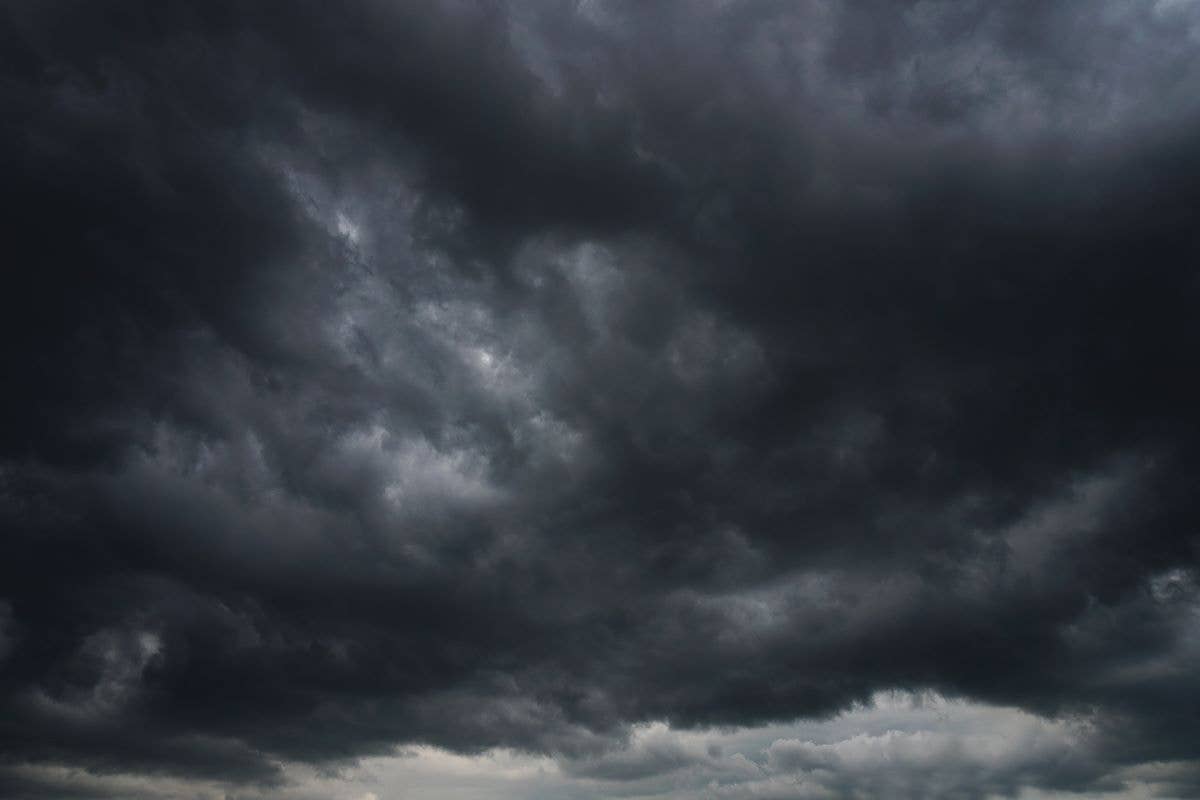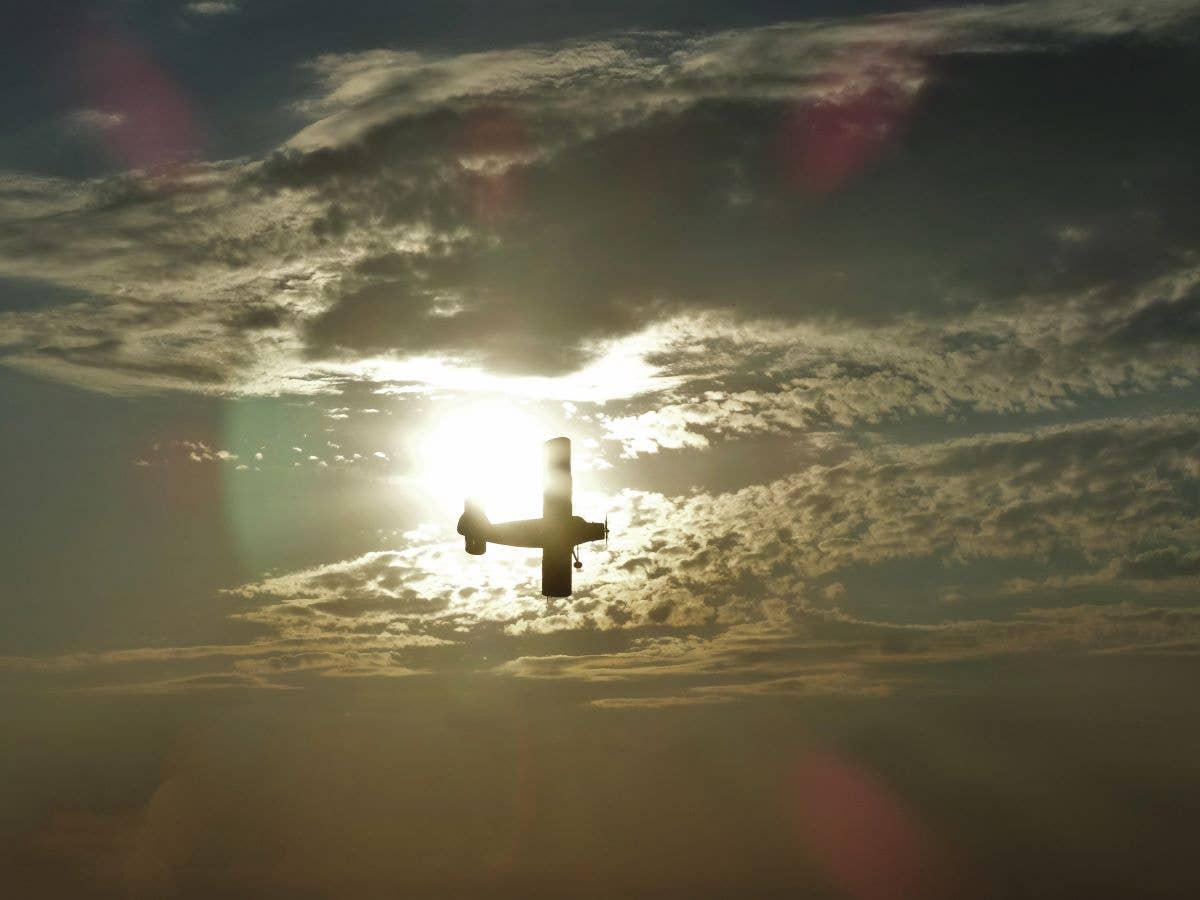The Fatal Desire to Impress
How much of a pilot’s decision making is drawn from irrational factors?

During the final flight, there was a layer of stratusclouds 500 feet above the ground, and so, although the visibility below the clouds was good, the weather was officially IFR. [Credit: iStock]
On December 3, 2021, a student pilot, 23, went from his home in Katy, Texas, to Cincinnati, Ohio, to take possession of a Piper Cherokee 140 that he had purchased. Surveillance video at West Houston Airport (KIWS) recorded that on his return, his fiancee and a third person emerged from the airplane with him. The next day he put 40 gallons of fuel into his airplane, and the day after that he flew it in the traffic pattern for 20 minutes.
On December 6, he called his flight instructor, with whom he had hitherto flown only in Cessna 172s, to ask whether his training could continue in the Cherokee. The instructor agreed, contingent on his looking over the airplane and its maintenance logs.
If you're not already a subscriber, what are you waiting for? Subscribe today to get the issue as soon as it is released in either Print or Digital formats.
Subscribe NowOn the evening of the 8th, after dark, the young man arrived at the airport with a female companion. The pilot mentioned going to Pearland (KLVJ), a short distance to the southeast. The pair climbed aboard the 140 and took off, heading southward.
On the following day, the pilot’s fiancée came to the airport. She had been trying without success to reach him by phone. His car, she found, was still in the airport parking lot. The airport manager reviewed surveillance camera video and found the pilot and his companion—that must have been an uncomfortable moment—arriving and taking off a little before 8:00 p.m. He brought up the online ADS-B tracking information for the 140’s N-number, and saw the short track of the flight heading south, then turning left and terminating over an undeveloped area a short distance south of Interstate10. The airport manager and safety officer took off and spotted the 140 in the woods two and a half miles from the airport. Responders found it demolished; its two occupants were dead.
The tracking information publicly available online uses longer time intervals between ADS-B hits than the FAA’s radar does. The higher-resolution FAA track revealed movements that clearly pointed to pilot disorientation. First, there was a descending left turn with increasing groundspeed, followed by a climbing right turn, followed by another descending left turn to the northeast, then a hard right descending turn back toward the southwest. The airplane descended more and more rapidly. Radar contact ended 700 feet above the ground. Most likely, the pilot had strayed into clouds and then, descending over an unlighted area, he could not reorient himself in time to avoid the crash, or perhaps stalled in an attempt to pull up.
The pilot, who had logged 38 hours of flight time over the past year, had completed his solo and night requirements and was close to his private check ride. He had not yet done the simulated instrument part of the training. His instructor described him as friendly and a good pilot, one who intended to make flying his profession.
His final flight was—to put it mildly—ill-advised. In addition to it being dark, there was a layer of stratusclouds 500 feet above the ground, and so, although the visibility below the clouds was good, the weather was officially IFR. The entire route to Pearland lay beneath the 2,000-foot floor of Houston Class B airspace, and it involved a dogleg to the south to avoid Hobby (KHOU). Along the way were some obstacles so tall that they poked through the TCA floor. In short, the proposed flight,although short in miles, was long in complications.
It was also illegal. The pilot’s student status precluded his carrying passengers. He had already demonstrated his willingness to ignore that restriction, but whether his nonchalance was due to an exaggerated sense of entitlement—not every 23-year-old student pilot can afford to buy his own airplane—or just youthful high spirits and resentment of restraint, we can’t guess. It seems likely, however, that one thing that entered into his choice to make that particular flight at that particularly inopportune time was the desire to impress. He was a young man; his passenger was an attractive young woman. What else needs to be said?
The desire to impress is almost, but not quite, a universal human trait. A few people are free of it. I myself know one, and I’m not even sure about her. When I began flying—I was not yet 20—I did a number of stupid things, most of them in order to impress certain women (at that time, I would have said “girls”). I still cringe today over one in particular that backfired so badly that in the mind of the woman in question, who atleast is still my friend, that flight eclipses all others that I have made since, and that I will make in the future. Since then, my need to impress has somewhat dwindled and now manifests itself mainly in a harmless proclivity for using fancy words. But I remember how I used to be, and so, while I deplore his judgment, I cannot but empathize with the young pilot who took off, impressively he thought, into that Houston night.
The quality of judgment that we pilots are expected to possess—and that is supposed to protect us and our passengers from actions that in retrospect will appear rash or completely idiotic—comes under the broad heading of “maturity.” It requires an ability to separate emotion from reason. That sounds easy, but the decisions that we consider rational are often influenced by biases, desires,and calculations of which we are barely—or not at all—aware. In theory, at least, we gain maturity from time and experience; some get a lot, some none at all.
One kind of situation presents a particularly obvious risk of ego-driven misjudgment. When we fly with another person whose esteem we crave, we may experience a sort of stage fright or “performance anxiety.” If that person is a pilot whom we perceive as our superior inexperience or native ability, the fear of doing something stupid, or just appearing awkward or flustered, flusters us and makes us awkward and stupid.
A poet I slightly knew in college once imagined a psych class called “Interpersonal Relations in the Group of One.” That would be a good class for pilots to take because, in addition to our desire to impress others, we may entertain a similar need to impress ourselves. Self-esteem is a powerful motive, and it affects pilots in both good and bad ways. On the credit side, it makes us work hard, try to perfect ourselves, and approach our flying with that attitude we call “professionalism.” On the debit side, it drives us to take unnecessary risks and to continue into worsening situations in order not to feel that we have “chickened out.”
As in finance, credit and debit in flying form a continuum. The hard part, sometimes, is to know which side of zero we’re on.
This article is based on the National Transportation Safety Board’s report of the accident and is intended to bring the issues raised to our readers’ attention. It is not intended to judge or to reach any definitive conclusions about the ability or capacity of any person, living or dead, or any aircraft or accessory.
This article was originally published in the February 2023 Issue 934 of FLYING.

Subscribe to Our Newsletter
Get the latest FLYING stories delivered directly to your inbox







